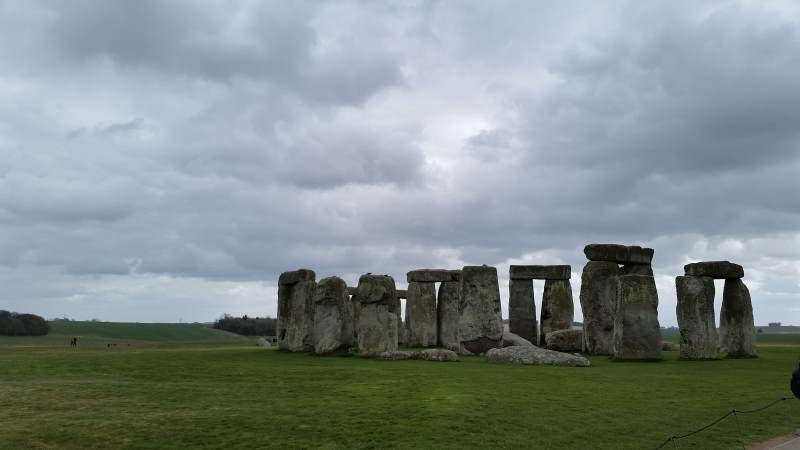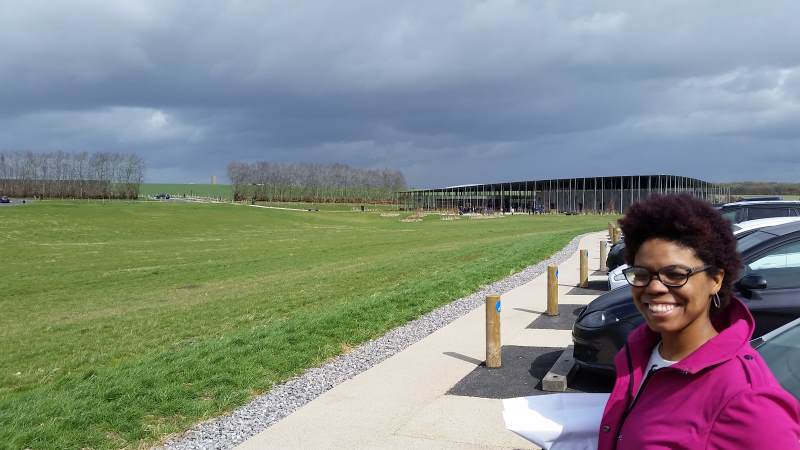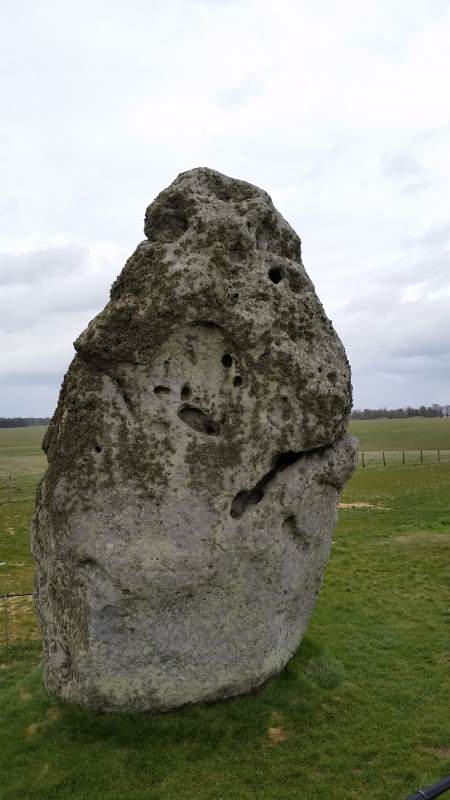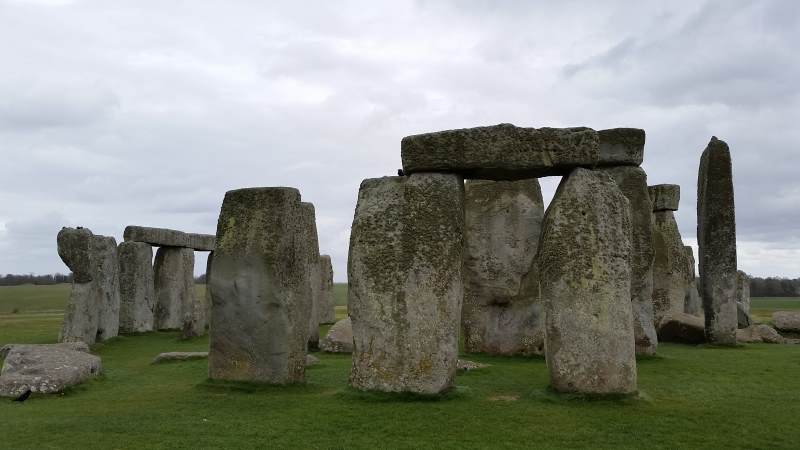Before Chrissy and I went on vacation to England, we were discussing the trip and what we might do while over there (besides spending time with my family). Mid-conversation, Chrissy tilted her head and said, "How far is Dorset from your parents' house?"
"About four hours, why?"
"Have you ever been to Poole?"
"When I was a kid. There's that photo of me with a python round my neck. Why?"
"What photo?"
"I have that yellow sweater on. Why do you want to go to Poole?"
"I don't remember that photo. You've never shown me."
"I swear I have, but whatever. Why do you want to go to Poole?"
"Oh, no reason. Just asking."
"Bollocks. Why do you want to go?"
And it was then that I discovered Poole in Dorset, England is the home of the very first Lush Cosmetics shop and spa.
Chrissy is a lushie1, she has ordered items from Lush Kitchens around the world, exchanged products with other lushies and generally had a jolly good time discussing Lush products over the Internet. For a while, it felt like a new package arrived every day. There were even three packages waiting for us at my parents' house in England. Chrissy loves Lush and the opportunity to visit the spot where it all began was irresistible. So, I planned a trip to Dorset.
Bournemouth
https://instagram.com/p/03RZYtAJ2w/?taken-by=jeff.yates
I found a hotel in Bournemouth (about 15 minutes drive from Poole), a seaside resort on the south coast of England where my family had holidayed when I was 8 or 9 years old (the same trip I met the python), and made a reservation for a couple of nights. Since we were going to be passing nearby, I also booked tickets to visit Stonehenge on the way back (it's about an hour and a half from Bournemouth)2. It would be a lovely little break, Chrissy could get her Lush fix and I could reminisce about childhood vacations while enjoying the English seaside.
The drive down was mostly uneventful until the very end. After checking in to the hotel, we had to navigate a road closure to find our hotel car park; this turned out to be gated with a key-coded entry and incredibly narrow. So narrow that the only reason I even attempted to drive in was the knowledge that someone must have done so already. So unbelievably narrow, a motorbike might have paused to consider the best strategy for passing through3. After squeezing our way into the car park, we rested up in our room before strolling down to and around the beach and pier.
https://instagram.com/p/03Q-aOAJ1w/?taken-by=jeff.yates
The architecture in Bournemouth is indicative of its popularity and growth during the early twentieth century. As we walked around, I was reminded often of the ITV television interpretation of Poirot.
https://instagram.com/p/03L9RIgJ8d/?taken-by=jeff.yates
After a windy wander along the pier, we grabbed some fish and chips for dinner, then went back to the hotel for a good night's rest. The next day was a big one; Chrissy would get to visit Lush prime.
Poole

I think Poole is probably most famous for the dolphin-marked Poole Pottery, but it is also the home of Sunseeker Yachts, a log boat preserved with sugar syrup4, a lot of pubs (and I mean a lot), and the very first Lush store. We parked up near the Quay and, checking directions on the map, walked to Lush.
Chrissy's excitement was palpable and photos were mandatory. Within moments of arriving, it was clear Chrissy had found kindred lushie spirits in the staff. When they realised how far Chrissy had traveled to be there, they offered her a tour of the spa and a free postcard as a souvenir of our visit. I do not recall ever being made as welcome in a shop as I was there, and I was only there because I'm married to a lushie.
At the end of the spa tour5, they asked Chrissy if she would like a treatment. She looked at me for encouragement, which, after a very brief moment of hesitation, I gave —how could I deny her this after travelling so far to be here? Within minutes, we were both6 ready to be booked in for their 80 minute treatment known as "The Good Hour", but there was a snag; they could only fit us in the next morning7. This unfortunate delay, we were to learn, was serendipity handing us an opportunity.
With the treatments booked, we headed out to explore Poole. We wandered the quay, saw Sunseeker yachts in varying states of manufacture and repair, admired some exceedingly old buildings, lost count of how many pubs we did not have time (nor the constitution) to visit, bought some gifts from Poole Pottery, and visited the museum. It turned out that Poole was really worth a visit, regardless of the initial reason we were there.

The next day, we returned to Lush. I do not want to go into details about the "The Good Hour" treatment, if you want spoilers I am certain the Internet will oblige, all I would like to say is that it was fantastic. The massage was excellent, the pirate-theme was whimsical and strangely relaxing, and the conversation with my masseuse, Emma, was thoroughly enjoyable if not a little…different8. After our treatment was over, we were given a nice cup of tea (with the option of a drop of rum) while we relaxed and enjoyed some more conversation with the friendly and lovely Lush staff. Everyone who we met was professional, friendly and chatty.
As we sipped our tea someone said in a low voice, "Mark is in if you'd like to meet him."
Mark was Mark Constantine, the co-founder and owner of Lush. Chrissy did not know what to say at first. Her eyes were wide like a child who just heard the distant chimes of an ice cream truck9. We walked out of the spa into the shop and glanced nervously round the corner at Mark. Megan, one of the amazing staff, stiffened up with nerves. No one was sure who should interrupt the boss and ask him to meet two people from Michigan. They were not intimidated by Mark, they were in awe of him.
"Mark is kind of a big deal," we were told.
Eventually someone got his attention and he came over to where we were stood. We shook hands. Chrissy was grinning so wide that her face sank beneath teeth and eyes. Even I was excited; not only was I getting to meet the owner of the company, but it was possibly the best thing that could have happened on Chrissy's pilgrimage to the Motherlush. The three of us posed for a photo, then Mark went back to his task and we finished up our purchases, ready to head off to Stonehenge. What a great day, it could not get any better.
Then just as we were about to leave, Mark's hand fell on Chrissy's shoulder.
"Wait here, let me get something for you."

Mark disappeared upstairs where the Lush labs, responsible for inventing new Lush products, reside. We were informed that much of the work in the labs had been focused on products for the new Oxford Street store10. A few minutes later, Mark returned with a small plastic box containing two sparkly cosmetic items.
"These aren't exactly new. They're existing products packaged in a new way."
As Chrissy nearly passed out from excitement, Megan took the shiny products and, after taking a picture of them for herself (these were new to everyone, it seemed), packaged them up for Chrissy. It was a generous finish to an already fantastic trip, something that I am sure we will talk of often. As we set off on our way to Stonehenge, I reflected on the day and how it would not have been possible on our last trip, when I had not brought my anxiety under some level of control. I could imagine us not getting the spa treatments because I worried about the cost, or because I worried about not making Stonehenge on time11. I could imagine us leaving the shop sooner, to be sure we would make our Stonehenge time-slot, missing our meeting with Mark Constantine and his generosity. Worse still, I could imagine me spilling all these anxieties out all over the place like an untamed fire-hose, drowning them in negativity so that we could never look back on them as the wonderful moments they were.
As it is, our trip to Poole was one of the best parts of our three weeks in England. Assuming Chrissy doesn't drag me off to the newly opened Lush on Oxford Street in London, I look forward to stopping by Poole to pop into Lush and say hello to the friendly staff, and perhaps to take a stab at those pubs.
https://instagram.com/p/05qnMyAJ2e/?taken-by=jeff.yates
- The word used to describe fans of Lush cosmetics [↩]
- That's right, the reason we went to Stonehenge was Lush [↩]
- OK, that's an exaggeration, but it was bloody narrow [↩]
- Sweet! [↩]
- I was allowed to tag along too [↩]
- Originally, I planned to try one of the many pubs while Chrissy had her treatment, but then I realised it's my vacation too and I deserved a massage [↩]
- Each treatment is unique, so the staff need time to setup the room according to the treatment chosen. Ours was pirate-themed…yes, that's right, pirates! [↩]
- Look out for the short story or perhaps even seven novel series (with derived movie franchise) I hope to write soon entitled, "The Radiator People" [↩]
- actually, they were wide like Chrissy had just heard the distant chimes of an ice cream truck [↩]
- Lush Oxford Street was not yet open at the time of our visit to Poole [↩]
- It turns out we didn't, but that's not the point [↩]








